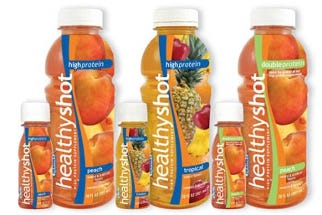New consortium tries to unwrap best ways to recycle shrink labels
Full-wrap shrink labels continue to grow in popularity with brands. "The labels do a great job of catching the consumer's eye," Holli Whitt, market development manager, sustainability for specialty plastics for Eastman Chemical told PlasticsToday. "They allow brands to create unique packages and bring great shelf awareness, which really lends itself to good brand loyalty."
January 25, 2013
Full-wrap shrink labels continue to grow in popularity with brands.
"The labels do a great job of catching the consumer's eye," Holli Whitt, market development manager, sustainability for specialty plastics for Eastman Chemical told PlasticsToday. "They allow brands to create unique packages and bring great shelf awareness, which really lends itself to good brand loyalty."
It appears there is no shrinkage in sight for the increasingly popular labels. A PlasticsToday article in 2012 reported that William Llewellyn, VP and senior counsel for Alexander Watson Associates, said while sleeve labels represent only 15% of the total market for labels globally in 2011, it's the fastest growing segment in the world.
 "Global growth for all sleeve-label formats is estimated at 6.5%," Llewellyn said. "Growth in North American and European markets held up well and that is stabilizing at approximately 5% depending on the format."
"Global growth for all sleeve-label formats is estimated at 6.5%," Llewellyn said. "Growth in North American and European markets held up well and that is stabilizing at approximately 5% depending on the format."
Full-wrap shrink labels are popular on food and beverage packaging along with household chemicals and personal care containers.
While these labels continue to experience rapid growth across brands and protect categories, full-wrap shrink labels are generally disruptive to both the sorting and processing of post consumer PET, according to The National Association for PET Container Resources (NAPCOR).
Currently, the majority of PET reclaimers, particularly those producing recycled PET material suitable for use in new containers, have to remove these bottles from their PET recycling streams, after which the bottles are either stockpiled, re-baled and exported, or handled separately, NAPCOR says. All of these options cause "significant" economic impact, the result of both the additional handling and the potential de-valuation of the PET bales.
Full-wrap shrink labels affect the PET reclamation process at several junctures: their full coverage impairs resin identification by automated equipment used to sort recyclables by material type; and the full-wrap shrink labels cannot be removed from containers by traditional prewash technology. However, NAPCOR says the most problematic of these labels are those that sink in water along with the PET during processing, thus creating more contamination than can be acceptably removed during the conventional PET recycling process.
Full-wrap label consortium
There's no easy fix to solving the recent issues surrounding PET bottles and full-wrap labels in the recycle stream. This is one reason Eastman Chemical organized a full-wrap label consortium. The group, which includes members from more than 30 companies across the value chain, is evaluating the issues and charged with developing near-term and long-term solutions that will benefit all involved parties in the supply chain.
"The consortium will start to look at what type of combination of solutions will have the most impact and the most financial gain without overspending," Whitt said. "We are looking at what will be the right combination that will have the most powerful impact."
Current options include floatable labels, label perforation to aid in removing labels at reclaimers' facilities, delabeling equipment availability at reclaimers' facilities and consumers removing the label from the end product prior to reclamation.
The full-wrap label consortium members include representatives from consumer goods manufacturers, resin producers, film extruders, print converters and label producers, equipment manufacturers, bottlers and packagers, plastics recyclers and independent testing firms.
Held in August 2012, the purpose of the first meeting was to discuss how labels are creating challenges in the recycling process and to begin exploring solutions. The second meeting, held in November 2012, was to consider the viability of potential solutions and identify critical success factors.
At the upcoming February meeting, consortium members will work to close some of the knowledge gaps that currently exist and continue to assess potential solutions and how the solutions might work together best.
"The biggest thing to remember is that this is a collaborative effort and folks around the industry are invested and committed to trying to find viable solutions," Whitt said. "We want to make sure brands have the opportunity to leverage the labels and experience the amazing brand loyalties."
About the Author(s)
You May Also Like


